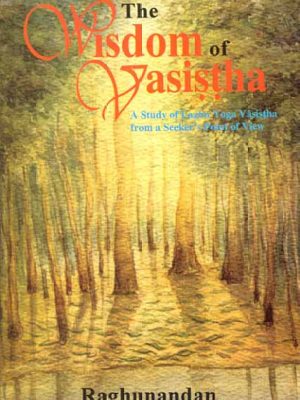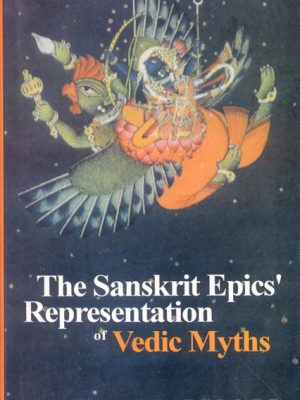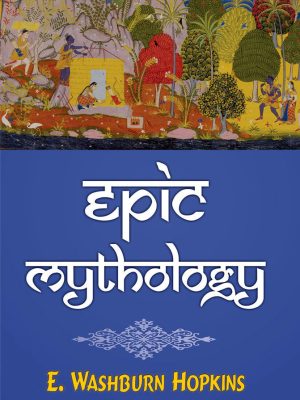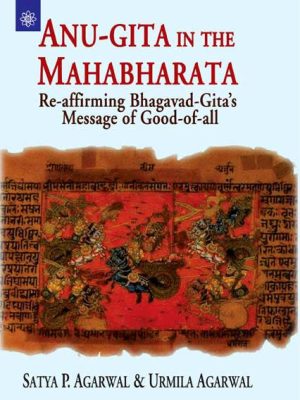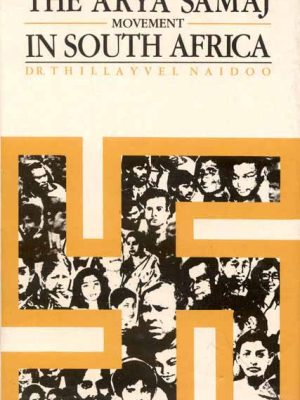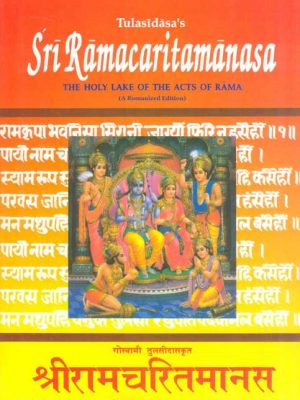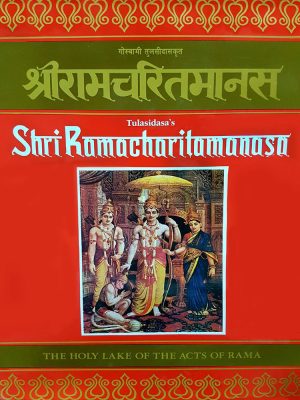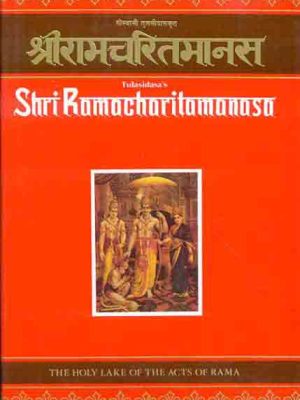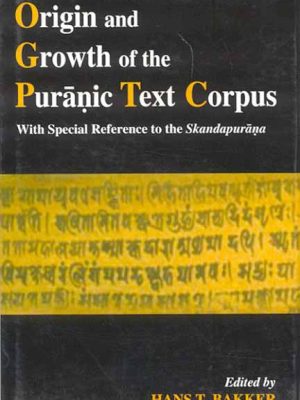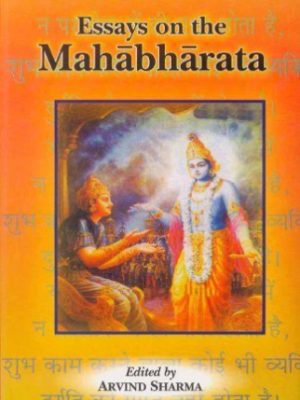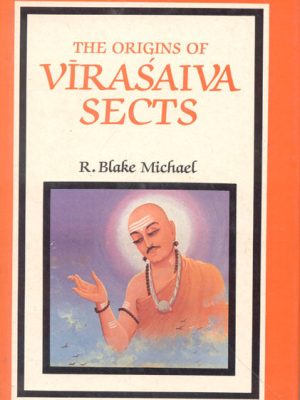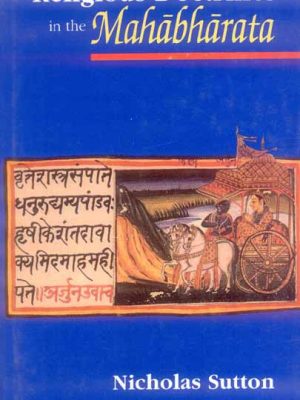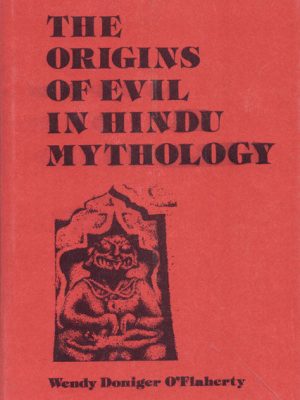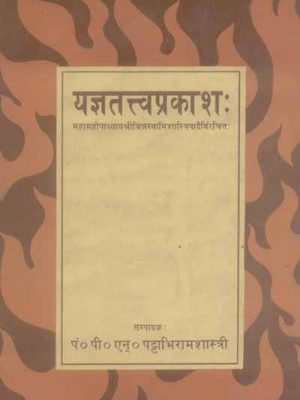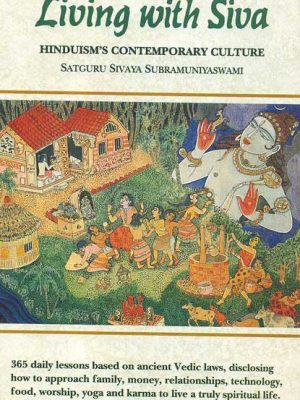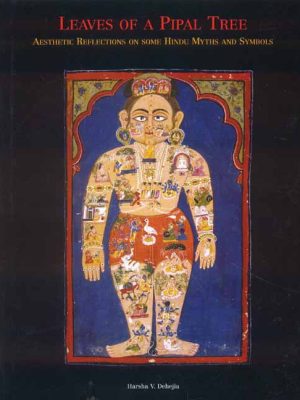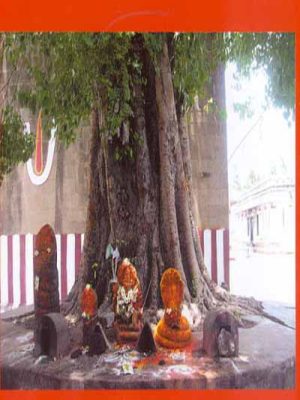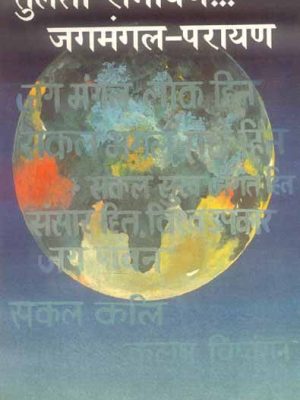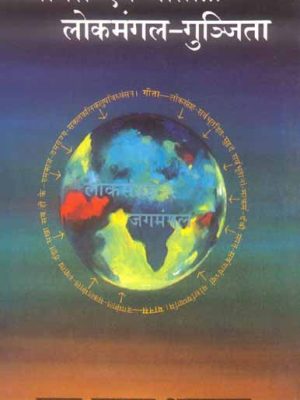Motilal Banarsidass
-
The Wisdom of Vasistha: A Study on Laghu Yoga Vasistha from a Seeker’s point of view
The Wisdom of Vasistha: A Study on Laghu Yoga Vasistha from a Seeker’s point of view
Yogavasistha or Yogavasistha Maharamayana has been a guide book to earnest Sadhakas, all over the country. The popularity of this book appears to be due to the fact, that it is a happy combination of terse Upanisadic thought clothed in the story form. The Wisdom of Vasistha: A Study on Laghu Yoga Vasistha from a Seeker’s point of view A scripture becomes relevant, when it gives the truths of the Upanisads, using a common man’s language with illustrative stories, helps a beginner as well as an advanced seeker. It is believed by some that Sage Valmiki wrote the Ramayana for the purification of mind and to create a mood of seeking in the society. It is well known, that the story of Sri Rama, gives an exemplary ethical and moral behaviour in an individual, and a glimpse into the ideal culture, through the description of Ayodhya. For only on a strong ethical and moral foundation can one hope to build the super-structure of spirituality. Attempt has been made to cover all the stories in six Prakaranas. This book is a study by a seeker, and an attempt to present the philosophy, and practical hints contained in the book, to fellow seekers who are not very familiar with Sanskrit. It is essentially meant for inspiring the seekers to take up the study of the original text, which is a mine of practical wisdom. The essays contained herein, are glimpses into the meditations on the golden verses and their connection and relevance in our day-to-day life. Consequently, the interpretation and the perspective is not really meant for scholastic pursuits.
Author
Raghunandan
₹3,000.00 -
The Sanskrit Epics Representation of Vedic Myths
The Sanskrit Epics Representation of Vedic Myths
As the name of this research project, “The Sanskrit Epics’ Representation of Vedic Myths,” suggests, my objective is to investigate the manner in which certain myths that are first presented (as far as India is concerned) in the Vedas, and more specifically in the Rgveda, are retold in the Sanskrit Epics, the Mahabharata and the Ramayana, and to investigate the manner in which the Epics re-use the mythological material Before we go any further, I will first provide a concise synopsis of the type, contents, and dates of the documents that were discussed earlier in this paragraph. The various passages ‘holy speech’ is what the phrase’mantra’ or ‘brahman’ meant when it was first used, and the name ‘Veda’ referred to the earliest layer of literature in the Sanskrit language. According to later Indian tradition — in particular, according to the Mimamsa, which is a school of Vedic exegesis — the Veda is eternal and authorless, and it was a’revea1d’ to the Vedic rsis or seers. Other names for the Veda include the sruti, which can be translated as “that which has been heard,” or the “revelation.” The Veda is composed of many layers of writings; the earliest of these are known as the Samhitas, which literally translate to “collections.” There are four different Samhitas. The Rgveda Samhita, also known as the “collection of poems,” is the earliest of the four. It was written between 1500 and 1000 BCE and is organised into ten mandalas, also known as books. The tenth mandala is often believed to be a more recent addition to the collection in comparison to the other nine mandalas.
Author
DANIELLE FELLER
₹795.00 -
Epic Mythology
Epic Mythology
The study of the Indian epics the Ramayana and the Mahabharata is given a fresh perspective with the publication of this collection. In it, for the very first time, mythology is separated from the overarching themes that run throughout both of the epic books. Within a few hundred years of the start of the Christian era, the people who lived in Northern India along the Ganges believed the mythology that is described in India’s two epics to be representative of their general worldview. The time period covered by the Mahabharata is from 300 B.C. to 400 A.D. In its entirety, the Mahabharata was written much later than the Ramayana, which is both more technically accomplished in its metre and the product of a single author. The more brutal epic style of the Mahabharata depicts a life that is more civilised than the one seen in the Ramayana. It is also the product of the combined efforts of many people over a long period of time.
Epic mythology is, however, is fairly consistent. There is no great discrepancy between the character of any one god in the Mahabharata and that of the same god in Ramayana. Nor is the character of gods very different in different parts of the Mahabharata, save for the sectarian tendency to invert the positions of the three highest gods in favour of the sect.
Author
Edward Washburn Hopkins
₹595.00Epic Mythology
₹595.00 -
Anu-Gita in the Mahabharata: Re-affirming Bhagavad-Gita’s Message of Good-of-all
Anu-Gita in the Mahabharata: Re-affirming Bhagavad-Gita’s Message of Good-of-all
The purpose of writing this book is to make available to English-knowing readers, an easyto-read version of Anu-Gita. Although Anu-Gita is an important part of the Maha-bharata, it has so far not been presented in a simple form to common people, with the result that most people do not even
know that such a book exists. The prefix ‘Anu’ denotes ‘after’, so Anu-Gita literally means ‘Gita occuring after’. In the Mahabharata, Bhagavat-Gita occurs in Parva No. 14. (In all, there are 18 Parvas in the Mahabharata).
It is well known that the Gita was taught by Lord Krishna to Arjuna on the battle field of
Kuruksetra. So it was a time of crisis at the time of Anu-Gita. In fact, the Mahabharata war was over and peace was established in the Kingdom, under the rule of Yudhisthira (whom every one including Arjuna supported).
But the format of Anu-Gita is different from that of the Gita. In the Gita, there was dialogue between Krishna and Arjuna. On the other hand, in Anu-Gita, Krishna makes use of three ancient
dialogues. Because of this, Anu-Gita has a lot of repetitions, which have made it longer than the
Gita. For example, Anu-Gita has thirty-six chapters (compared to eighteen chapters in the Gita), and 1040 shlokas (compared to 700 shlokas in the Gita). In order to present Anu-Gita in an easy-to-read version, the authors have omitted the repetitions, and have selected 400 shlokas. But they have retained all the main teachings of Anu-Gita.
Most people (even in India) have not heard the name of Anu-Gita. This is so because, although Anu-Gita is an important part of the Mahabharata, no scholarly study of it, in a simple language, has so far been published. This gap will be filled by this pioneering book, which explains under what circumstances was the Gita taught by Lord Krishna to Arjuna, for the second time. This book is divided into two parts. Part I presents the Sanskrit-shlokas of Anu-Gita, along with their translation in simple English. Part II explains the main points of similarity, as well as dissimilarity, between Gita and Anu-Gita.
Author
Satya P. Agarwal
₹250.00 -
Arya Samaj Movement in South Africa
Arya Samaj Movement in South Africa
Even though it is primarily a religious organisation, the Arya Samaj movement emerged as a significant player in India’s fight for social and cultural autonomy, which involved both religious and secular groups. It was established in 1875, foreshadowing the establishment of an independent India in 1947. This work makes no attempt to provide a detailed
investigation of the movement, but also presents a summary of its development and philosophy in the context of the contributions made by its founder, Swami Dayanand Sarasvati. There is a lot of reason to be proud of the Samaj’s complex of institutions and upliftment programmes that they started, as well as the major historical forces that played a role in shaping the movement.
The nineteenth century saw the beginning of a number of different socio-religious groups, one of which was the Arya Samaj. Despite this, it was responsible for the construction of many of the most prestigious educational institutions in northern India. Indian groups who had immigrated to other countries, such as Mauritius, South Africa, and Guyana, were among the first to feel the impact of these events. What was once a little religious group has now grown into a religious denomination that has significant weight in the world today. One of the Arya Pratinidhi Sabhas may be found in South Africa.
the most well-known Hindu organisations that have a significant amount of sway over the north Indian subset of the Hindu people.
Author
T. Naidoo
About the Author
Originally from Johannesburg, South Africa, Dr. Thillayvel Naidoo went to school and graduated as a teacher. A graduate of the University of South Africa, he moved to India to pursue his M.A. in Indian Philosophy at the University of Madras. Research Officer at the University of Durban-Department Westville’s of Science of Religion. He is presently a professor of Philosophy of Religion at the university where he earned his doctorate. On Hinduism, he is the author of many publications on the subject: The Hindu Way, Sai Baba: An Analysis of Manifestations, The Parsee Community in South Africa, and Tamil People in South Africa.
₹200.00 -
Tulasidasa’s Sri Ramacaritamanasa: The Holy Lake of the Acts of Rama (A Romanized Edition)
Tulasidasa’s Sri Ramacaritamanasa: The Holy Lake of the Acts of Rama (A Romanized Edition)
The SHRI RAMACHARITAMANASA by Tulasidasa is the single most popular book among Hindus. This book has a huge appeal to the affluent and the poor, the learned and the uneducated, the elderly and the young, and the scholar and the ordinary man. It has done so for over four centuries. This one-of-a-kind version of the Ramacharitamanasa, which also includes the original text written by Tulasidasa as well as verse-by-verse translations into Hindi and English, was created with the goal of satisfying the growing interest that people have in epic literature. The translation that was done by a skilled academic does the original work justice in terms of its inherent depth and complexity. It has been crafted with the intention of being of help to Indian brothers and sisters who now reside outside of India and for whom Tulasidasa’s original may have been written in a dialect that was difficult to understand. A regular and genuine copy of the Ramacharitamanasa has been in high demand among the enormous Indian population that has relocated outside of India for a significant amount of time. This particular version is distinguished by the incorporation of Lavakushakanda, Shri Hanumanchalisa, and Shri Ramashalaka Prashnavali as one of its key features. Special care has been taken for making it useful to the Indian brethren living abroad to whom the dialect of Tulsidasa’s original may be somewhat incomprehensible. There has been a long-standing demand from the vast Indian community settled abroad for a standard and authentic edition of the Ramacharitamanasa
This version is based on our very first publication of Shriramacharitamanasa, which came out in 1988 and received widespread praise.
The current edition, which has been produced to fulfil their need by using the most up-to-date printing and processing processes, has been created to conform to the worldwide standard for works of literature.
The manner in which it is to be recited is detailed in an appendix that is presented on its own. The fact that book has key sections written by Indian, European, and American experts is another factor that contributes to its one-of-a-kind character.
comments on Tulasidasa’s Ramacharitamanasa. At the very end, you will find a dictionary that defines significant epithets and proper nouns.
Author
DR. R. C. PRASAD
₹3,000.00 -
Shri Ramacharitamanasa: The Holy Lake Of The Acts Of Rama
Shri Ramacharitamanasa: The Holy Lake Of The Acts Of Rama
The SHRI RAMACHARITAMANASA by Tulasidasa is the single most popular book among Hindus. This book has a huge appeal to the affluent and the poor, the learned and the uneducated, the elderly and the young, as well as the scholar and the ordinary man. It has been around for more than four centuries.
Its popularity is neither exclusive to India, nor is it just read by Hindus, neither of which is true. Because it reaffirms man’s trust in the robustness of moral order that sustains the world, the message of the RAMACHARITAMANASA is more pertinent than ever in today’s world. Dark and wicked powers may and will sometimes pose a danger to disturb that order, but eventually, divine intervention will chasten and subjugate those forces and bring them under control.
This one-of-a-kind version of the RAMACHARITAMANASA has been developed with a verse-by-verse Hindi and English translation, in addition to Tulasidasa’s original text, bearing in mind the ever-increasing interest that people have shown in epic literature. The fundamental richness of the original has been preserved in the translation that was produced by an expert scholar. It has been constructed with the intention of being of assistance to Indian brothers and sisters who are now residing outside of India and for whom the dialect used in Tulasidasa’s original may be rather difficult to understand. The enormous Indian diaspora living in other countries has, for a very long time, voiced their desire for a standard and genuine copy of the RAMACHARITAMANASA. The current version was developed to fulfil their request by using the most cutting-edge printing and processing methods available in order to produce a product that conforms to international standards.
This version is distinguished in particular by the incorporation of Lavakushakanda, Shri Hanumanchalisa, and Shri Ramashalaka Prashnavali. The manner in which it is to be recited is detailed in a separate appendix. The significant portion that includes Indian, European, and American scholars’ critiques of Tulasidasa’s RAMACHARITAMANASA is another facet that contributes to the book’s one-of-a-kind character. The last section includes a dictionary that defines significant proper nouns as well as epithets.
Dr. R.C. Prasad translated SHRI RAMACHARITAMANASA into simple and lucid English and Hindi. He was a University Professor of English in Patna University where he taught for about three decades. He was an eminent author, translator and editor. He had a good number of books to his credit.
₹1,500.00 -
Shri Ramacharitamanasa of Tulasidasa: The Holy Lake of the Acts of Rama
Shri Ramacharitamanasa of Tulasidasa: The Holy Lake of the Acts of Rama
This one-of-a-kind version of the Ramacharitamanasa, which includes Tulsidasa’s original text in addition to verse-by-verse translations in Hindi and English, was created with the goal of satisfying the ever-increasing interest that people have in epic literature. The translation that was done by a skilled academic does the original work justice in terms of its inherent depth and complexity. The Indian brothers who are now residing outside of India, for whom the regional accent of Tulsidasa’s original may be somewhat difficult to understand, have been the focus of particular attention in the process of making this resource helpful. A regular and genuine copy of the Ramacharitamanasa has been in high demand among the enormous Indian population that has relocated outside of India for a significant amount of time. The current edition, which has been produced to fulfil their need by using the most up-to-date printing and processing processes, has been created to conform to the worldwide standard for works of literature.
The addition of Lavakushakanda, Shri Hanumanchalisa, and Shri Ramashalaka Prashnavali is a noteworthy aspect of this edition. The manner in which it is to be recited is detailed in an appendix that is presented on its own. The inclusion of an essential portion that contains Indian, European, and American scholar’s critiques of Tulsidasa’s Ramacharitamanasa is another factor that contributes to its one-of-a-kind quality. At the conclusion, you will get a dictionary that defines significant proper nouns as well as epithets.
Author
DR. R. C. PRASAD
₹495.00 -
Origin and Growth of the Puranic Text Corpus: With Special Reference to the Skandapurana
Origin and Growth of the Puranic Text Corpus: With Special Reference to the Skandapurana
The Purana panel that was part of the 12th World Sanskrit Conference that was held in Helsinki in July 2003 was intended to investigate deviations from the original Purana texts, and the papers that were presented at that panel are gathered in this collection. They concentrate mostly on the original Skandapurana, which is an excellent resource for research on the beginnings, development, and growth of the Purana writings as well as the theological advancements that these works depict.
The order in which the chapters of this book are presented has a purpose, even if each chapter may be read independently of the others. The first portion of Bakker’s contribution might be seen as a kind of introduction to the topic being discussed. The second component of the analysis focuses on a portion of the text in which the distinction between recension and other categories does not have a significant impact. Torzsok and Harimoto’s contributions centre on the transmission of the Purana and its evolution into a variety of recensions during the course of their research.
Author
Hans T. Bakker
₹600.00 -
Essays on the Mahabharata
Essays on the Mahabharata
This book is considered to be a classic analysis of a massive work known as the Mahabharata. It is maybe the longest epic in all of written history. It is an epic study of epics due to the voluminous size it has itself attained, the kaleidoscopic variety of the themes it covers, the great diversity of approaches it canvasses, the wide array of contributions it includes, and the high standard of scholarship it achieves. All of these factors combine to make it an epic study of epics. Students and academics specialising in Hinduism, comparative religion, comparative literature, comparative mythology, and classics are the target audience for this work.
Author
Arvind Sharma
₹695.00Essays on the Mahabharata
₹695.00 -
The Origins of Virasaiva Sects: A TypologicaL Analysis of Ritual and Associational Patterns
The Origins of Virasaiva Sects: A TypologicaL Analysis of Ritual and Associational Patterns
An investigation of Virasavism is provided in the book Origins of the Virasaiva Sects. Already, the actions of founder and reformer Basava are well recognised throughout the whole of India and the rest of the globe. The Sunyasampadane, an important document from the evolution of Virasaivism in the third century, is investigated here. The subject of Virasaivism is investigated in great depth here. Already, the efforts of Virasaivism’s founder and reformer Basava are widely known across all of India, and some parts of Virasaivism’s reformation have garnered the attention of western research. The author delves into a crucial document known as the Sunyasampadane, which dates back to the formation of Virasaivism in the third century.
Author
R. Blake Michael
₹350.00 -
Religious Doctrines in the Mahabharata
Religious Doctrines in the Mahabharata
This is the longest epic poem ever written, and it is widely considered to be one of the best epic poems ever written in any language. With the intention of serving as a treatise on life in general, it covers topics such as religion and ethics, politics and government philosophy, and the search for redemption.
Reprint of a foundational text on the Mahabharata that examines the book’s most important ideas and topics. a new perspective on the ancient Hindu and Indian epicReview(s)
“…it explores a certain discourse rather than expounding a single dogmas” … extremely useful to have materials from the whole epic so carefully assembled and compared.” – Journal of Royal Asiatic Society
“This is an eminently readable book.
Author
Nicholas Sutton
₹995.00 -
The Origins of Evil in Hindu Mythology
The Origins of Evil in Hindu Mythology
James Austin’s insights into the fundamental connections that exist between Zen Buddhism and brain science are continued in this volume, which is a follow-up to his extremely popular book Zen and the Brain. In Zen-Brain Reflections, Austin, a clinical neurologist, researcher, and Zen practitioner, investigates the growing psychological processes and brain alterations connected with the path of long-range contemplative training. Austin is also a researcher at the University of California, San Francisco. Not only does Austin draw from the most recent findings in neuroscience and new neuroimaging investigations, but he also pulls from Zen literature and his own experience with different states of consciousness. This book picks up exactly where the last one left off. Zen-Brain Reflections. It provides answers to issues such as “how exactly do placebos and acupuncture impact the brain?” Can scientists using neuroimaging pinpoint the locations in our brains where our concepts of self first take shape? How can the most cutting-edge brain imaging techniques be used to better effectively monitor meditators? How is it that extensive amounts of time spent meditating, along with fleeting experiences of enlightenment, may bring about fundamental changes in the physiological makeup of the brain? In a number of the chapters, there are theories that may be tested that indicate methods to associate normal brain processes and the practise of meditation with the occurrence of unusual states of consciousness. After making a quick introduction to the subject of Zen and discussing the most current findings from research into meditation, Austin discusses the most recent findings from research on the amygdala, frontotemporal connections, and paralimbic extensions of the limbic system. After that, he investigates the many states of consciousness, from the earliest, most shallow absorptions to the latter, most significant “peak experiences.” This discussion starts with the states known as kensho and satori and includes an updated study of the many ways in which these states convey “oneness.” He refers beyond the even more advanced phases toward that uncommon continuing degree of enlightenment that is characterised by the manifestation of “sage wisdom.” Last but not least, in
Author
W.D. O’Flaherty
₹850.00 -
Yagyatattvaprakash-Chinnswami Shastri Virchit
Yagyatattvaprakash-Chinnswami Shastri Virchit
Yagyatattvaprakash-Chinnswami Shastri Virchit
Author
P. N. Pattabhiram Shastri
₹645.00 -
Living with Siva: Hinduism’s Contemporary Culture
Living with Siva: Hinduism’s Contemporary Culture
365 daily teachings that are founded on ancient Vedic rules and disclose how to handle family, money, relationships, technology, food, worship, yoga, and karma in order to live a really spiritual existence.
The Complete Master Course Series
This book contains some information that has never been published before and all of it is vital to your own awakening on the road to uniting with God. You will discover these profound truths and insights of Indian spirituality inside its pages. Dancing with Siva is the first book of a unique trilogy that is collectively referred to as The Master Course. It represents the culmination of fifty years of yogic realisations and the sharing of the Hindu mystical teachings with aspirants. The trilogy is a comprehensive overview of astanga yoga, which is also known as raja yoga. Astanga yoga is comprised of eight distinct stages, each of which is reliant upon the step that came before it. These eight processes are known as yama (restraint), niyama (observance), asana (posture), pranayama (breath control), pratyahara (sense withdrawal), dharana (concentration), dhyana (meditation), and samadhi (intense concentration) (contemplation).
The trilogy elucidates, in clear and concise words, why one must start at the beginning, with a solid foundation consisting of philosophical coherence and moral excellence, and then progress from there. The book “Dancing with Siva” explains the philosophical and Vedic-Agamic ideas, attitudes, and expectations that are central to the Saivite school of Hinduism.
The second book in the trilogy is titled Living with Siva, and it delves into the Saivite way of life, as well as its culture, family dynamics, character development, and the overpowering of negative routines. If emphasises yama and niyama, in addition to pranayama and asana, although to a lesser extent (hatha yoga).
Merging with Siva is the third book in the trilogy, and it covers steps five, six, and seven. These steps lead to step eight, which is the deeper realisations, samadhis, yogic experiences, and mystical encounters, such as the inner light and nada-nadi sakti, all of which we begin to experience once we learn how to dance with Siva and how to live with Siva. Merging with Siva can be purchased here. The yogic and metaphysical experiences that are detailed in Merging with Siva come about spontaneously and may be maintained if one first has a strong foundation of knowledge.
Author
₹1,795.00 -
Agni (2 Vols.) with 2 CDs: The Vedic Ritual of the Fire Altar
Agni (2 Vols.) with 2 CDs: The Vedic Ritual of the Fire Altar
A consideration of the role of the Agnicayana in the Vedic srauta tradition, its textual loci, traditional and contemporary interpretations of its origins and meaning, and an overview of the Nambudiri Vedic tradition are all included in the first book of Agni: The Vedic Ritual of the Fire Altar. The majority of the book is dedicated to a comprehensive account of the twelve-day performance that took place in 19875. This account was written in close collaboration with C.V. Somayajipad and M.Itti Ravi Nambudiri, and it is lavishly illustrated with tipped-in photographs that are predominantly coloured and almost entirely taken by Adelaide de Menil. There are various images, tables, and maps included inside the text. Both the original Devanagari text and an English translation of the mantras are provided. Archeology, the pre-Vedic Indian background, geometry, ritual vessels, music, Mudras, Mimamsa, a survey of Srauta traditions in recent times, the influence of Vedic ritual in the Homa traditions of Indonesia, Tibet, China, and Japan, and related topics are covered in the second volume, which was edited with the assistance of Pamela MacFarland. This volume contains contributions from an international galaxy of scholars on archaeology, the pre-Vedic Indian background There are also translations of the relevant Srauta Sutras of Baudhayana (together with Calanda’s text) and the Jaiminiya (with Bhavatrata’s commentary) as well as the Kausitaki Brahmana; and there is also a survey of the project along with an inventory of the films and tape recording that was made in 1975.
Author
Frits Stall
₹5,000.00 -
Leaves of A Pipal Tree: Aesthetic Reflections on some Hindu Myths and Symbols
Leaves of A Pipal Tree: Aesthetic Reflections on some Hindu Myths and Symbols
India is a civilisation of many images, a culture of many visual feasts, a tradition where the visible and the palpable are as important as the oral and the occurrent, where our highest truths are embodied in our kathas and gathas our songs and stories, where our temples are not only places of worship but equally a gallery of beautiful forms and figures where myth is as important as doctrine, where ancient memories are full of cherished narratives where mythic beings are reimagined
Author
HARSHA V. DEHEJIA
About the Author(s)
HARSHA V. DEHEJIA has a double doctorate, one in Medicine and the other in Ancient Indian Culture both from Bombay University, in India. His first two books, The Advaita of Art and Parvatidarpana have been acclaimed.
₹2,500.00 -
Gods Beyond Temples
Gods Beyond Temples
The holy is more of an experience than an idea in the Indian tradition, and it extends well beyond the confined spaces of an organised temple or even a shrine. The adherents of this religion, much like the gods of this tradition, are humble and unassuming, yet at the same time dignified and certain of themselves. Whether it be a tree that is revered or a naturally occurring stone that is revered, a river that is the embodiment of divinity itself, an ancestor that is worshipped, a fabric that is simply draped, a road side shrine on a busy street or a votive terracotta horse that was lovingly made and offered, a narrative scroll that holds its audience spell-bound; here is religion at work that is as spontaneous as it is intemperate. The rites and practises performed in honour of these deities are neither written nor canonised; nonetheless, whatever they may lack in grandeur, erudition, and formality, they more than make up for in the faith and passion that they inspire in those who participate in them. These sacred manifestations and expressions of the ordinary people have a tendency to be sidelined or dismissed by academics as well as the world at large, as minor or lesser gods worthy of curiosity but not of serious study. However, it is important to keep in mind that they have a beauty and presence of their own in the pluralistic Indian tradition.
About
HARSHA V. DEHEJIA
About the Author(s)
HARSHA V. DEHEJIA has a double doctorate, one in Medicine and the other in Ancient Indian Culture both from Bombay University, in India. His first two books, The Advaita of Art and Parvatidarpana have been acclaimed.
₹2,500.00Gods Beyond Temples
₹2,500.00 -
Tulsi Ramayana-Jagmangal Paraayan
Tulsi Ramayana-Jagmangal Paraayan
Tulsi Ramayana-Jagmangal Paraayan
About the Author(s)
Dr. Satya P. Agarwal is a Social Scientist. His academic honours include five gold medals and numerous merit scholarships and research fellowships at various universities. The Governor of the State of Maryland conferred upon him “The Governor’s Citation”, in recognition of his pioneering books as also his contribution to social service. He is author of several books besides the present one which are widely acclaimed and appreciated by the discerning readers. Other honours conferred on him include: (i) Kunti Goyal International Award, (ii) Special Award of Manas Sangam and (iii) International Tulasi Award.
₹395.00 -
Manas evam Gita: Lokmangal-Gunjita
Manas evam Gita***Lokmangal-Gunjita
Manas evam Gita: Lokmangal-Gunjita
Author
Dr. Satya P. Agarwal
About the Author(s)
Dr. Satya P. Agarwal is a Social Scientist. His academic honours include five gold medals and numerous merit scholarships and research fellowships at various universities. The Governor of the State of Maryland conferred upon him “The Governor’s Citation”, in recognition of his pioneering books as also his contribution to social service. He is author of several books besides the present one which are widely acclaimed and appreciated by the discerning readers. Other honours conferred on him include: (i) Kunti Goyal International Award, (ii) Special Award of Manas Sangam and (iii) International Tulasi Award.
₹295.00
